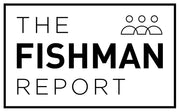Becoming a Local Clinical Scientist - the fit of RBA
When I relocated to New Zealand with my family in 2001, I wondered if the Results-Based Accountability™ (RBA) framework might retrofit into the clinical arena to treat troubled adolescents and their families. Having followed RBA’s widespread acceptance, I have found this clinical model to be highly effective. What follows comes from my recently published book Performance-Based Family Therapy: A Therapist's Guide to Measurable Change.
The Learned Scholars
Numerous researchers question the effectiveness of psychotherapy and pharmacotherapy, the two key treatments presently offered to millions of people with mental disorders around the world. Recent evidence suggests however that their treatment outcomes could be overestimated due to publication bias, researcher allegiance, and certain shortcomings in study design.
According to the prodigious researcher and Stanford University Professor John Ioannidis, “as a field, we are failing". Prof. Ioannidis is best known for the most accessed article in the history of the Public Library of Medicine (with over 3 million downloads) of 'Why Most Published Research Findings Are False' (2005), and he has over 2000 referenced journal articles.
Using both meta-analysis and randomized controlled trials (RCTs) of psychotherapy and psychopharmacology, Prof. Ioannidis found that the efficacy is limited - indeed, no better than waiting lists.
The costs for mental health services are astronomical: The Lancet Commission on Global Mental Health and Sustainable Development estimates a loss of US $16 trillion to the global economy due to mental disorders in the period 2010–2030.
These findings are dispiriting, yet not surprising. A monumental challenge however to psychotherapy has emerged.
Sharing my point of view
In the middle 1990s, government programs were haemorrhaging money.
Mark Friedman, having spent 20 years managing the finances of children’s services for the state of Maryland, developed Results-Based Accountability™ (RBA). After all this expenditure, he wanted to answer ‘is anyone better off’?
His book, Trying Hard Is Not Good Enough : How to Produce Measurable Improvements for Customers and Communities (2005), has sold over 75,000 copies.
RBA was a resounding call to action for public services. All US states and many countries, including New Zealand, adopted this common-sense framework. It provides accountability for government and community organizations to improve the performance of program services by focusing on results (or outcomes) to make a positive change.
As the newly appointed clinical director of a New Zealand residential program, I contacted Mark Friedman. We agreed to work together, merging Intensive Structural Therapy (IST) into RBA with standardized processes and structures to help us achieve predictable results.
What does the front-line clinician do?
With questionable outcomes, an assortment of clinical models, and some reliance on flawed published research, the clinician and the patient have a quandary.
To quote Freedman, “The research world can only tell us a fraction of what we need to know, we need to make sure that we use our common sense, our life experience and our own knowledge of the communities in which we live.”
The simple framework of RBA offers the notable opportunity for every clinical encounter to track and monitor your own performance regardless of the model used.6 steps to use RBA effectively :
- Build an organized system of care with stakeholders— all stakeholders meet to determine the agreed upon outcome.
- Establish goals: start with the desired end result and work backwards.
- Determine measures that matter and choose grounded measures!
- Make a plan: only choose steps that lead to the agreed-upon outcome.
- Establish targets: the best estimates of measures over a specific time period (reaching a target is used as an intermediate outcome).
- Use the Turning the Curve tool: progress is measured from the baseline using ‘Turning the Curve’, tracking grounded parameters, where every client is their own control.
In conclusion
Adopting RBA, you can become a ‘Local Clinical Scientist’. Track your performance and embrace the models that prove to be most effective. After all, our imperative is to measure what matters—always asking, is anybody better off?
Image credit: Isaiah Maghanga, via Wikimedia Commons
